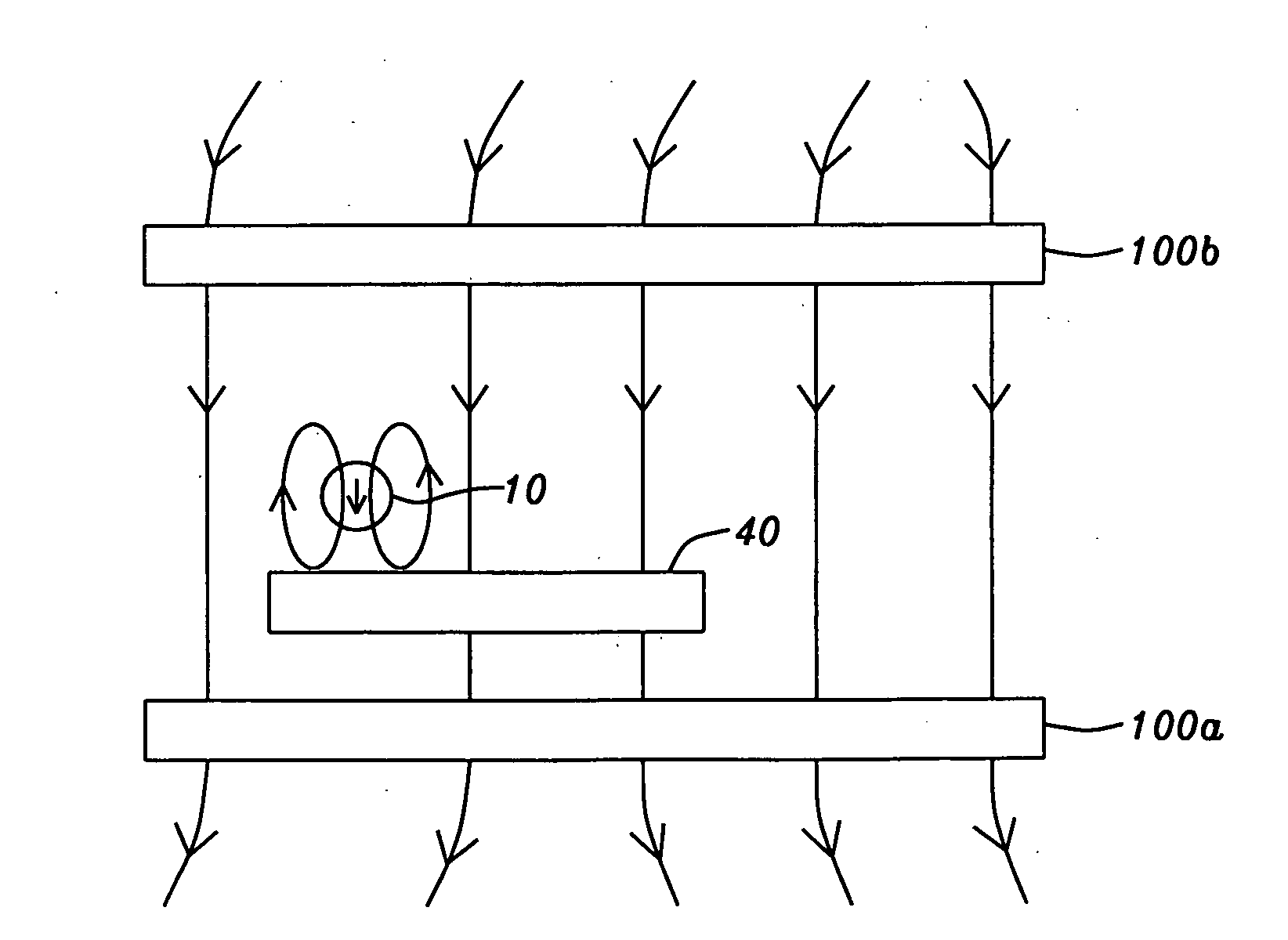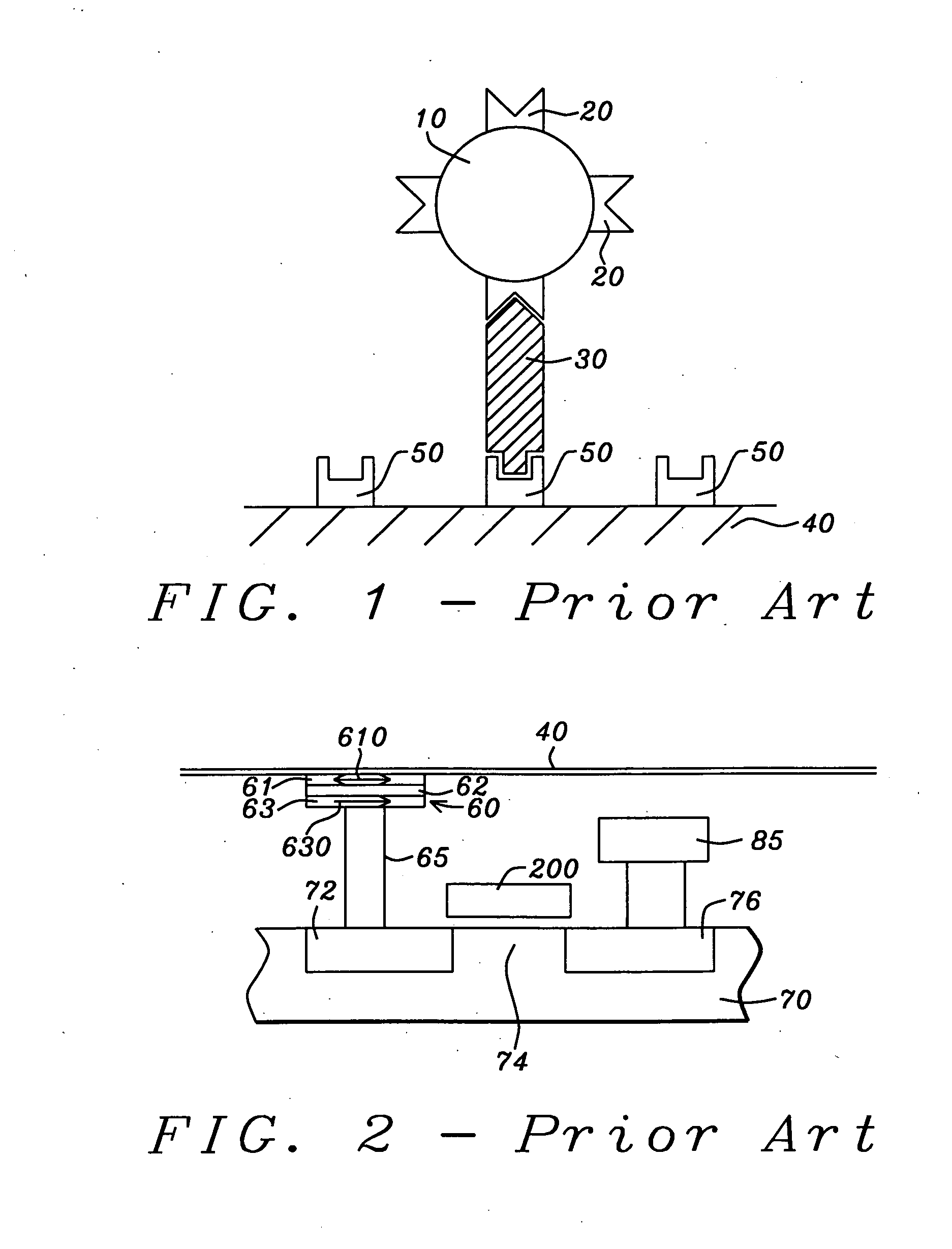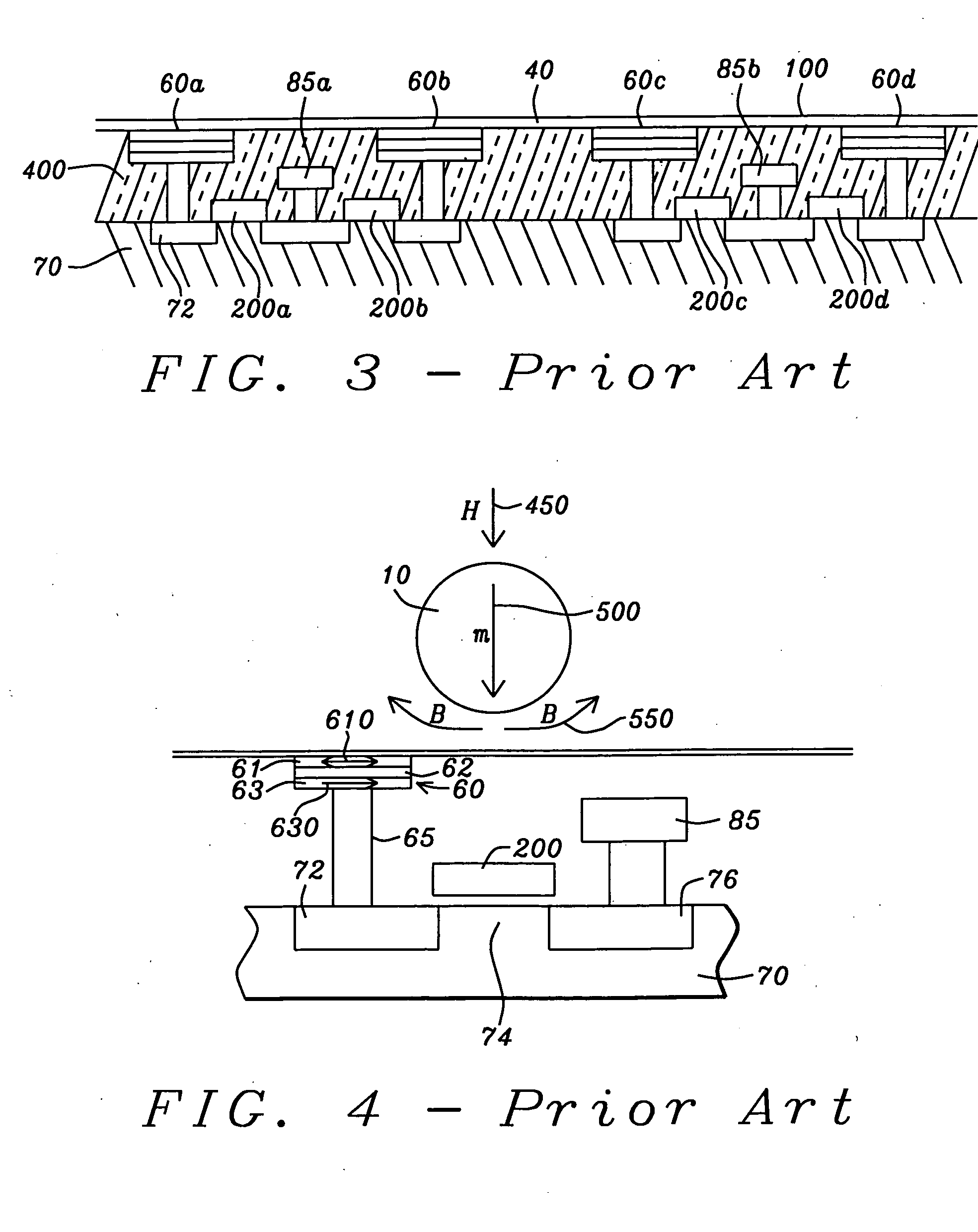GMR biosensor with aligned magnetic field
- Summary
- Abstract
- Description
- Claims
- Application Information
AI Technical Summary
Benefits of technology
Problems solved by technology
Method used
Image
Examples
Embodiment Construction
[0033]Although any planar sensor whose electrical impedance is affected by an external impinging magnetic field that has an in-plane component can be used to meet the objects of this invention, a preferred embodiment of the present invention uses a planar laminated GMR or TMR based sensor (i.e., an array of GMR or TMR cell elements formed on a planar substrate). This sensor will be used for detecting the presence of small magnetized particles (also called magnetic labels), typically bonded to chemical molecules and thereby affixed to the sensor surface. The GMR or TMR based planar sensor, by virtue of a proximate, parallel and at least co-extensive layer of soft (low coercivity, high permeability) magnetic material, called a keeper layer, formed closely adjacent to the array, for example, upon it or beneath it or both, is then not adversely affected by an in-plane component of an external static magnetic field that is used to induce a magnetic moment in the magnetic particles. The l...
PUM
 Login to View More
Login to View More Abstract
Description
Claims
Application Information
 Login to View More
Login to View More - R&D
- Intellectual Property
- Life Sciences
- Materials
- Tech Scout
- Unparalleled Data Quality
- Higher Quality Content
- 60% Fewer Hallucinations
Browse by: Latest US Patents, China's latest patents, Technical Efficacy Thesaurus, Application Domain, Technology Topic, Popular Technical Reports.
© 2025 PatSnap. All rights reserved.Legal|Privacy policy|Modern Slavery Act Transparency Statement|Sitemap|About US| Contact US: help@patsnap.com



